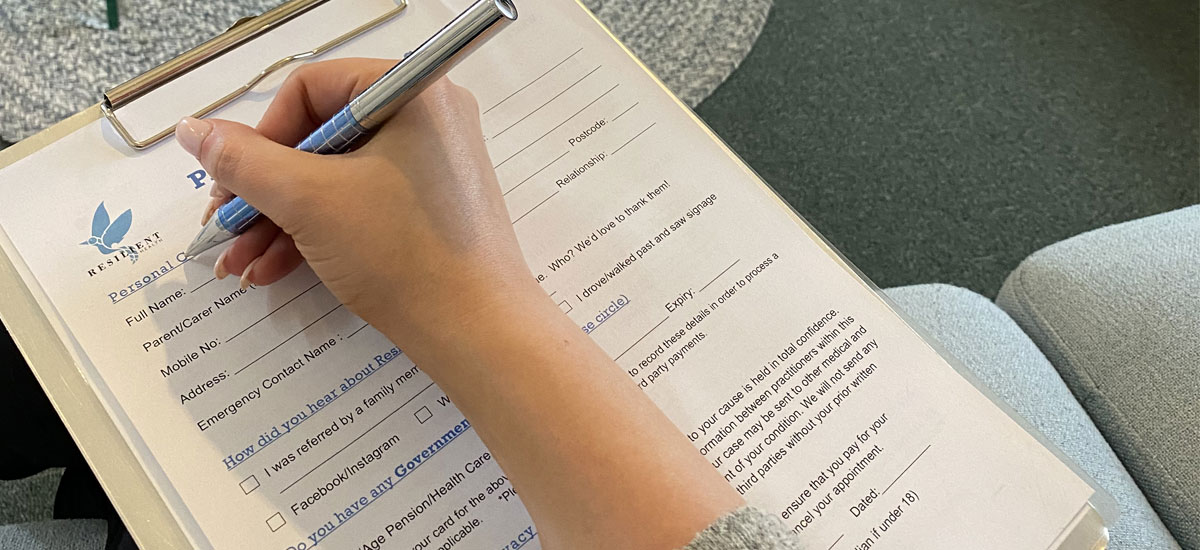Written and researched by our Resilient Health Osteopaths Dr Casey Beaumonnt and Dr Mel Pierlot
To understand stress we need to understand three things:
- The Autonomic nervous system.
- The autonomic nervous system is a group of nerves in our body that control all our automatic and involuntary bodily functions (e.g. digestion, heart rate, glands and breathing). It is divided into two parts: the sympathetic (fight or flight) and parasympathetic (calm & rest) nervous system. They work co-operatively together to ensure our system is modulated correctly! (For more information on these nervous systems read our blog on "What is the Autonomic Nervous System? How can you work with it?" written by our Osteopath Dr Mel Pierlot: https://www.resilienthealth.co/blog/58-what-is-the-autonomic-nervous-system-how-can-you-work-with-it)
- 2. Stress isn't ONLY mental.
- Stress can also be physiological; this means that stress can come from our body systems working too hard (e.g. blood chemical imbalances, liver overworking when processing medication, inflammation). Stress, whether from mental strain or body strain, has a significant and extensive impact on the body's organs and systems.
- 3. We each have the power to change and impact our inner stress at any time.
A few terms that will help for our discussion about stress:
Homeostasis- a state of optimal equilibrium in the body. Homeostasis is the ability for our body to retain a stable internal environment, even when our external environment changes. It is essential for life. All systems in our body are responsible for maintaining this balance. (e.g. our glands producing sweat when its it's hot so that our body temperature stays at a cushy 37 deg).
For example: blood pressure increasing when you get up first thing in the morning to help pump blood around our body against gravity = homeostasis.
Allostasis - is an extension of the homeostasis concept. It is when our body adapts our level of homeostasis in response to acute/ short term stress. It recognises that the goal posts of homeostasis may move depending on what is happening in the environment. Allostasis is often referred to as "stability through change", and it is usually driven by stress hormones in our body.
- For example: Blood pressure increasing to continually feed our muscles when running a marathon= allostasis.
Allostatic overload/ high allostatic load - refers to the cumulative effect of being in an allostastic state for a prolonged period. We are only meant to only be in an allostatic state for the short term. When we are in an allostasis for an extended period of time there can lead to disease and chronic illness in the body.
High allostatic is when when the body is doing a lot all at once. For example: fighting a cold, making a significant life change and doing your everyday life all at once! It can include mental and physical, as well as physiological (body systems) contributors.
"The evidence is that homeostasis maintains the parameters of life, allostasis is the process that allows the body to adapt through change, and allostatic load and overload are the result of cumulative wear and tear on the brain and body."- (Department of Veterans Affair, 2012).
Heterostasis - a state in which we need external help in order to return to homeostasis.- ive been finding conflicting definitions of Heterostasis and there doesnt seem to be heaps of it in the literature. Would you like to keep this in?
What is the process into normal stress-response?
What is a normal stress-response?
Ideally, when we are in a state of rest our body is functioning mostly with the parasympathetic nervous system (PNS).
During times of stress (e.g. feeling unsafe) the sympathetic nervous system (SNS) steps in and contribute more. This is a good thing- this is essential for our survival!
The aim of the SNS is for the body to do some extra work in the short term to overcome the stressor, and then settle back to its homeostasis using our PNS.
1st - Alarm response
It is acute, or short lasting
It is most often what we see in clinic when something new has happened.
In this case, our body's aim is: stress response ➝ homeostasis ➝ health
Sometimes in today's modern world, this looks more like:
Stress ➝ homeostasis ➝ the body has not handled the stress completely
2nd - Resistive Response (coping)
The body is under stress for a longer time
This isn't sustainable
If we reach Allostasis disorders can begin to manifest
3rd - Exhaustion Response
The body can no longer cope
It can crash- feel more tired, get sick, impact your body's other physiological responses.
This is where the body might reach Heterostasis; where help is needed to rectify the condition caused by the ongoing stress-response. Heterostasis can also be responsible for an out of proportion response to stress when a condition occurs. (e.g. doing simple tasks of everyday living causing extreme amounts of pain/ fatigue).
Tests for Allostatic load:
Our body is able to wax and wane or cope with many things at one time and changing allostasis is a part of our every day life. In some instances, we may not be sick, but we may not be feeling great, so this is where testing for optimal health may come in. Some tests that give us an insight into when we might be under a higher allostatic load may include:
- testing blood pressure
- blood tests or urinalysis: if these contain higher levels of cortisol or adrenaline in the morning, then it is indicative of a high allostatic load
- blood glucose: an issue with how our bodies process energy is an important factor to consider in acknowledging the potential for a metabolic issue like diabetes or syndrome X (a cluster of problems associated with resistance to insulin and/or hyperinsulinemia that includes obesity, high central distribution of fat, hypertension, and dyslipidemia. From: Encyclopedia of Human Nutrition (Second Edition), 2005.)
By regularly testing these parameters you can
- establish a baseline (when you are feeling your best),
- See your levels when you are stressed
- Compare the results, and see where you sit on your scale presently.
In order to assess stress level remember that stress is affected by your:
Individual state
Support Network
Socioeconomic status
Treatment:
Treatment for Allostatic Load varies for each persons individual symptoms, the source of their load, or how much their body is doing all at once.
2 major approaches help:
-changing the stressor
-aiding the person to respond in a healthy way to the stressor
Osteopathy can work with the physiology of the body and help to restore the balance in your body. Whether that be reducing stress/strain through tissues, relaxing the nervous system or providing advice on how to combat your stressors.
??STATs:
Allostatic Load has been shown to contribute to disease of the cardiovascular, metabolic and immune, system. It is also correlated with post traumatic stress disorder, major depressive disorder, and anxiety (Department of Veterans Affairs, 2012).
?osteo articles on stress response- rosalba and covid-19 breathing dysfunction and Osteo aid in OA life- check
See you in the clinic!
The Resilient Health Team
References:
https://www.ncbi.nlm.nih.gov/pmc/articles/PMC1197275/#:~:text=The%20term%20“allostasis”%20has%20been,cortisol%20and%20other%20chemical%20messengers.
